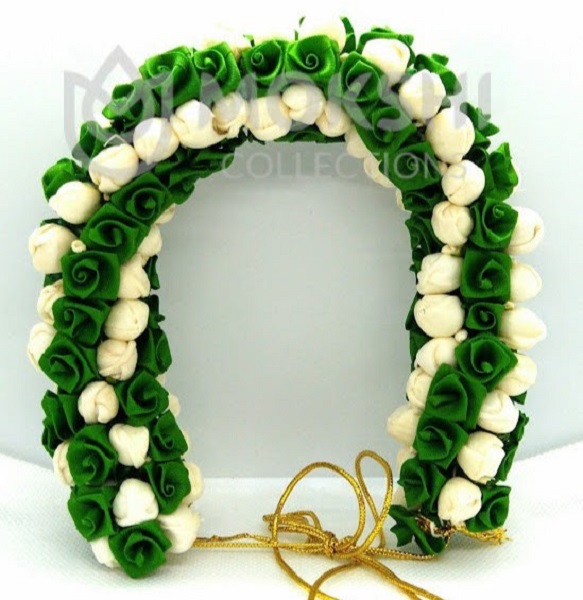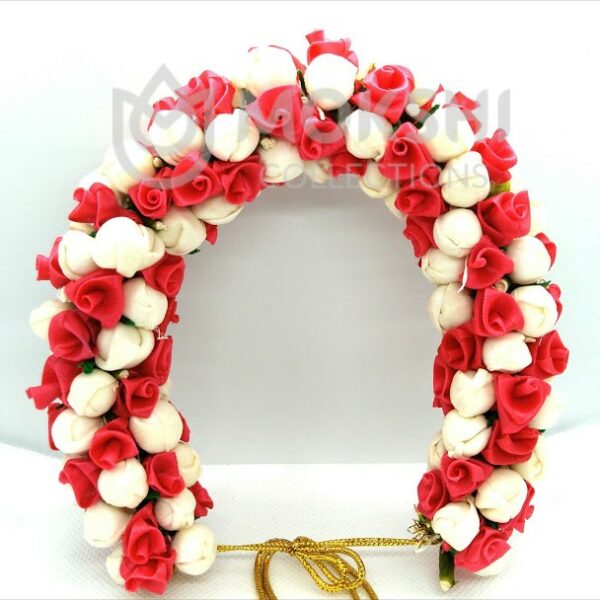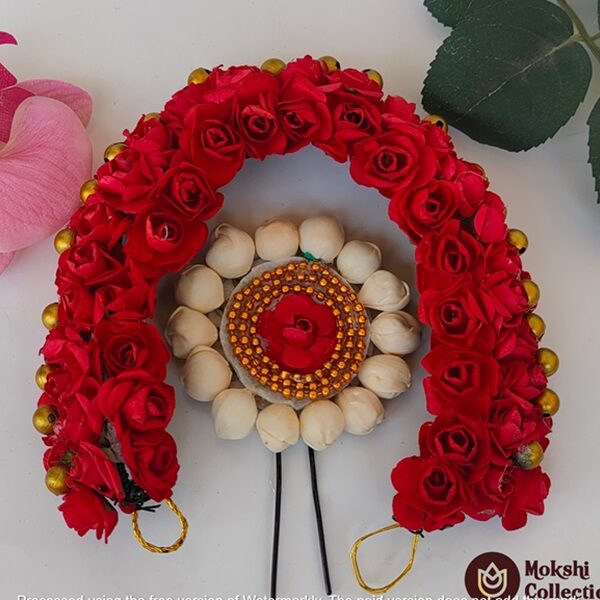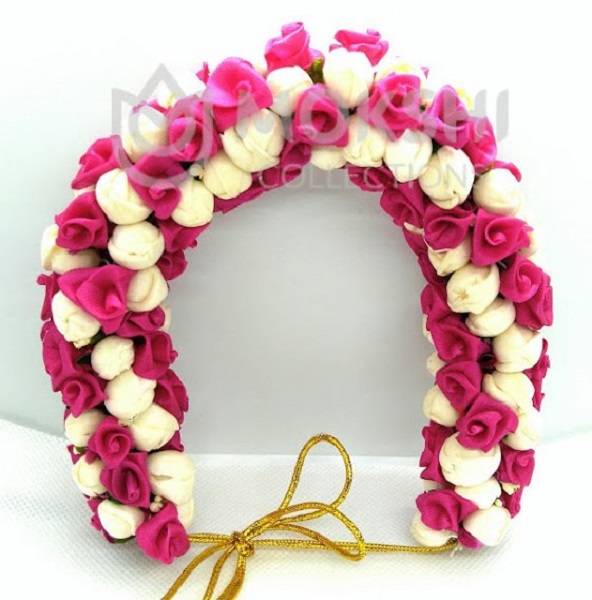Description
Product Details:
- It has 1 piece of Dark Green Gajra
- It’s a Reusable product
- It can be worn on any occasions
- Made with Artificial Flowers
Dark Green Gajra: A Rich Fusion of Tradition and Sophistication
Introduction
In the rich tapestry of South Asian fashion and tradition, the Dark Green Gajra emerges as a distinctive and elegant hair accessory. Characterized by its deep, lush green hue, this floral adornment brings a touch of sophistication and cultural depth to various occasions. The Dark Green Gajra is not only a beautiful accessory but also a symbol of tradition, nature, and timeless elegance.
Historical and Cultural Significance
The tradition of using flower garlands and hair accessories dates back to ancient South Asian civilizations, where flowers were believed to hold spiritual and symbolic significance. They were used in religious rituals, ceremonies, and celebrations, reflecting the profound connection between nature and human life.
Green, often associated with nature, growth, and renewal, carries a special significance in various cultures. In South Asian tradition, the color green is symbolic of fertility, prosperity, and vitality. When incorporated into a Gajra, the dark green hue adds a unique depth and richness to the accessory, making it a popular choice for occasions where a touch of nature and tradition is desired.
The Dark Green Gajra’s historical roots can be traced to its use in traditional ceremonies and rituals. It was often worn by brides and participants in religious festivals to signify purity and reverence. The use of green flowers in these contexts reflects the deep cultural values associated with nature and its role in human life.
Design and Craftsmanship
Creating a Dark Green Gajra involves a meticulous process that highlights both artistry and skill. The process begins with selecting the finest flowers in shades of dark green. Common choices include green chrysanthemums, orchids, and various types of jasmine. These flowers are chosen for their rich color, texture, and durability.
Artisans carefully string or weave these flowers into a garland, ensuring that the design is both visually appealing and functional. The dark green flowers are often combined with subtle embellishments such as gold or silver threads, beads, or sequins to enhance their beauty and ensure the Gajra remains secure when worn.
The craftsmanship involved in making a Dark Green Gajra reflects the artisan’s expertise and dedication. Each flower is meticulously arranged to create a harmonious and elegant design. The final product is a beautifully crafted accessory that captures the essence of sophistication and cultural heritage.
Cultural and Ritualistic Importance
The Dark Green Gajra holds a special place in South Asian cultural and religious practices. Its rich green color and intricate design make it a popular choice for significant occasions such as weddings, religious ceremonies, and festivals.
In traditional weddings, the Dark Green Gajra is often worn by brides and their attendants as part of their bridal ensemble. The deep green flowers add a touch of elegance and grandeur to the bridal look, complementing traditional attire such as sarees and lehengas. The Gajra’s symbolism of growth and prosperity aligns with the themes of new beginnings and the union of two families.
During festivals such as Diwali, Ganesh Chaturthi, and Onam, the Dark Green Gajra enhances the festive atmosphere and connects individuals to their cultural roots. The rich color of the flowers adds to the celebratory spirit and reflects the importance of nature and renewal in these occasions.
Modern Interpretations
In contemporary fashion, the Dark Green Gajra has been reinterpreted to fit various styles and settings. Modern designers and fashion enthusiasts incorporate this traditional accessory into a range of looks, from traditional outfits to fusion wear.
Fashion shows and editorial shoots often feature the Dark Green Gajra, showcasing its versatility and ability to enhance both classic and modern styles. This adaptation allows the Gajra to appeal to a broader audience and be worn in diverse contexts, whether for a formal event, a casual gathering, or a festive celebration.
The Dark Green Gajra also finds its place in contemporary bridal fashion, where it is used to create unique and personalized looks. Brides and fashion-forward individuals embrace the Gajra for its ability to add a distinctive touch of nature-inspired elegance to their attire.
Care and Maintenance
To ensure that the Dark Green Gajra remains in excellent condition, proper care and maintenance are essential. Flowers are delicate and can wilt quickly, so handling the Gajra with care is crucial. Store the Gajra in a cool, dry place away from direct sunlight and humidity to preserve its freshness and appearance.
Using natural preservatives or floral sprays can help extend the life of the flowers and maintain their vibrant color. It is also advisable to wear the Gajra for special occasions rather than everyday use to prolong its beauty. Regular cleaning and careful storage will help preserve the Gajra’s elegance and ensure that it remains a cherished accessory for years to come.
Conclusion
The Dark Green Gajra is more than just a hair accessory; it is a symbol of elegance, tradition, and natural beauty. Its rich color and intricate design make it a timeless addition to South Asian fashion, capturing the essence of cultural heritage and sophistication. Whether worn for a grand occasion or as a statement of personal style, the Dark Green Gajra continues to enchant with its depth, beauty, and cultural significance. As it evolves and adapts to modern trends, it remains a beloved and meaningful part of the rich tradition of floral adornments.







 Online | Privacy policy
Online | Privacy policy
Reviews
There are no reviews yet.